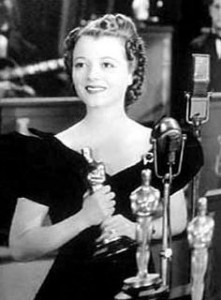The anti-union origins of the Oscars
 The story goes that in 1926 Louis B. Mayer, mahoff of Metro-Goldwyn-Mayer, contemplated a seaside retreat in Santa Monica at what today is 625 Pacific Coast Highway. He calculated that studio carpenters could build his tiled-roof villa in six weeks but balked at paying scale to the newly unionized workers. Within weeks of the completion of his paradise on the Pacific, Mayer strategized with studio acolytes over dinner. Should they create a group to “mediate” labor disputes—a euphemism for the prevention of further unionization—plaguing the industry?
The story goes that in 1926 Louis B. Mayer, mahoff of Metro-Goldwyn-Mayer, contemplated a seaside retreat in Santa Monica at what today is 625 Pacific Coast Highway. He calculated that studio carpenters could build his tiled-roof villa in six weeks but balked at paying scale to the newly unionized workers. Within weeks of the completion of his paradise on the Pacific, Mayer strategized with studio acolytes over dinner. Should they create a group to “mediate” labor disputes—a euphemism for the prevention of further unionization—plaguing the industry?
In the beginning it was called the Academy of Motion Picture Arts and/or Sciences. While its ostensible purpose was management-approved mediation, its implicit goal was to pre-empt actors, writers and directors from organizing, as carpenters, musicians and electricians had done in 1926. Statuettes were an afterthought.
There is no record of the moment when Mayer or his minions hatched the idea that awards for “the talent” might help keep union organizers at bay. No sooner than the academy became the “studio-approved alternative” to a real union, as film historian Richard Koszarski put it, its by-invitation-only membership gave rise to “immediate grumbling, especially among the actors and writers.” To the extent that the Screen Actors Guild and Screen Writers Guild weren’t established until 1933 (with the blessing of the pro-labor President Franklin D. Roosevelt), Mayer’s brainchild forestalled the inevitable for six years.
Like most organizations built by committee, the academy had multiple objectives. Improving public relations as well as labor relations were the initial goals. As its first president, Douglas Fairbanks Sr., reminded the audience at the formative academy banquet in 1927, movie people labored under a cloud of public contempt. He called for constructive action to legitimize the industry. By the way, he added, there would be “awards of merit for distinctive achievement.”
There was no Oscar at the first awards ceremony in 1929 (recognizing cinematic achievements in 1927-28) for “best picture.” Recognizing the distinction between popular entertainment and artistic ambition, members cited Wings, the World War I aerial drama, as “most outstanding picture,” and Sunrise: A Song of Two Humans, the lyrical and elemental account of husband, wife and temptress, as the “most unique, artistic, worthy and original” production.
The following year, the two awards categories were collapsed into one “best picture.”
Despite its country-club demographics and the cynicism behind its creation, the fact is that without the Academy, what incentive would Hollywood have to make anything other than Pirates of the Caribbean and The Avengers?
Should the Academy restore the “most outstanding picture” and “most artistic picture” categories?



This was all news to me. Thanks for this piece, which I’ll pass on.
Why are there awards shows like the Oscars and Grammies? What was the original motivation to give awards to art?
I don’t know about the Grammies, but the Oscars were founded in rider to suppress the formation of trade unions in Hollywood: http://www.carrierickey.com/blog/the-anti-union-origins-of-the-oscars/